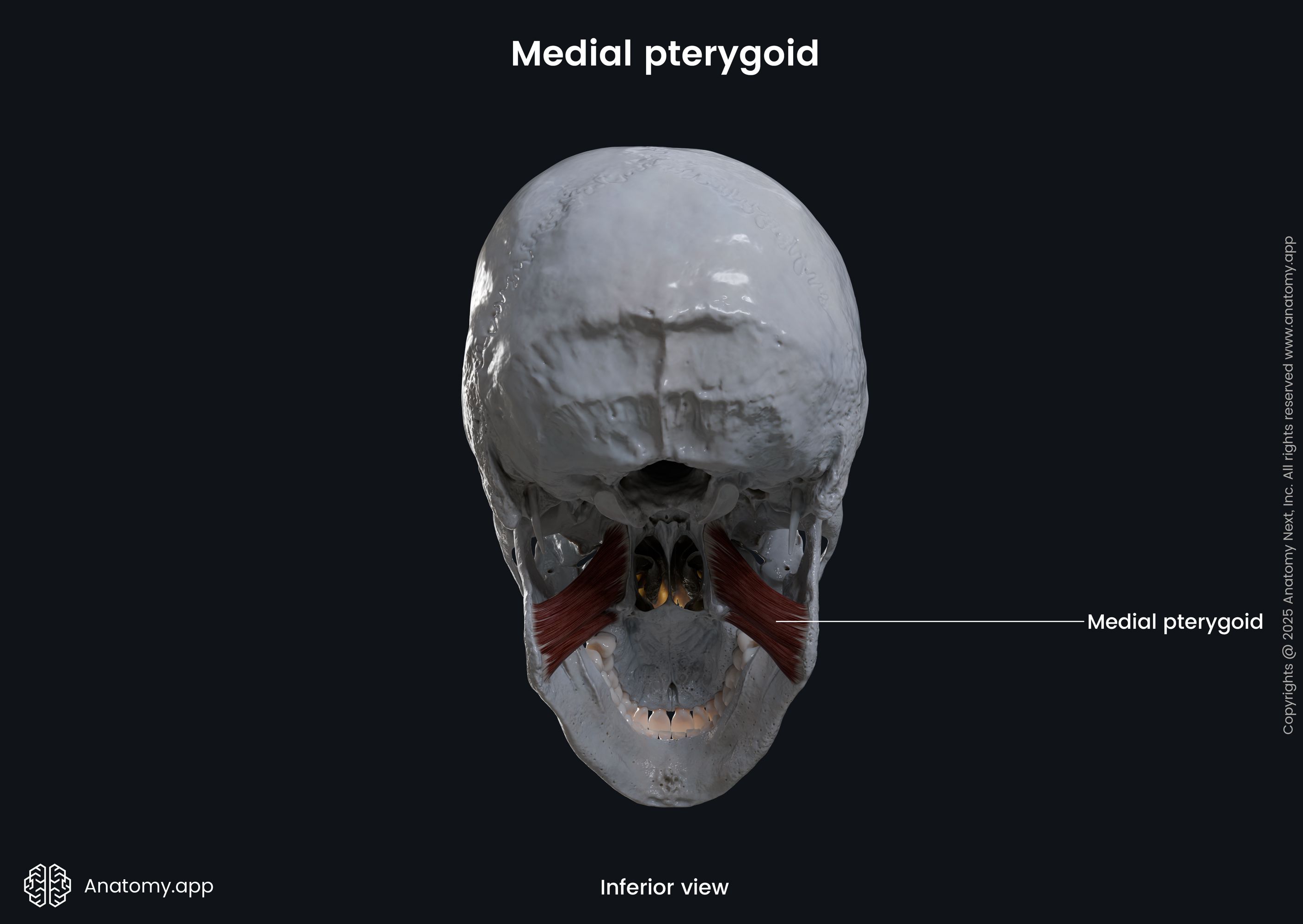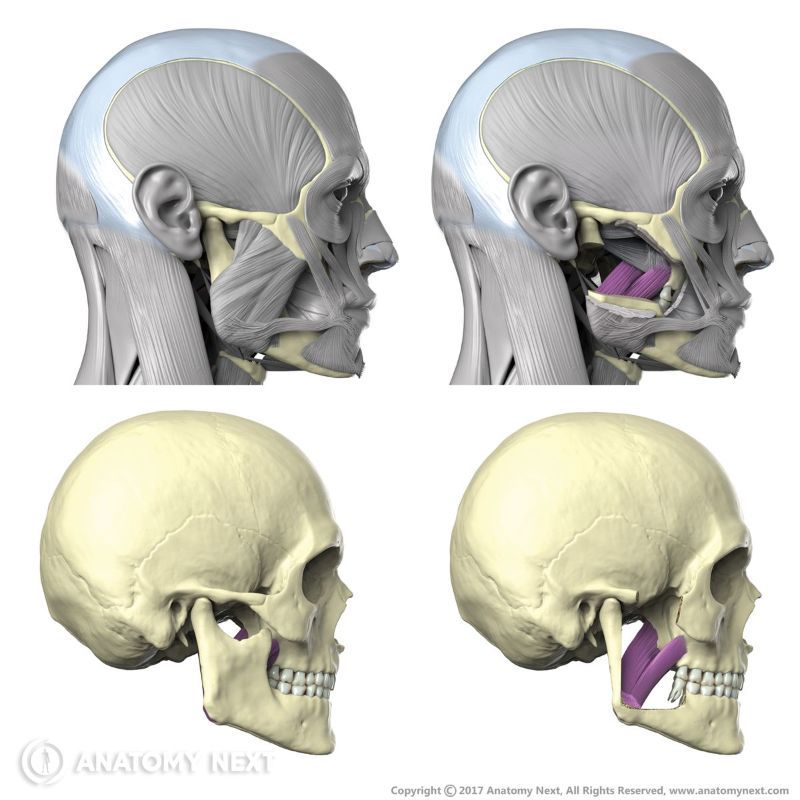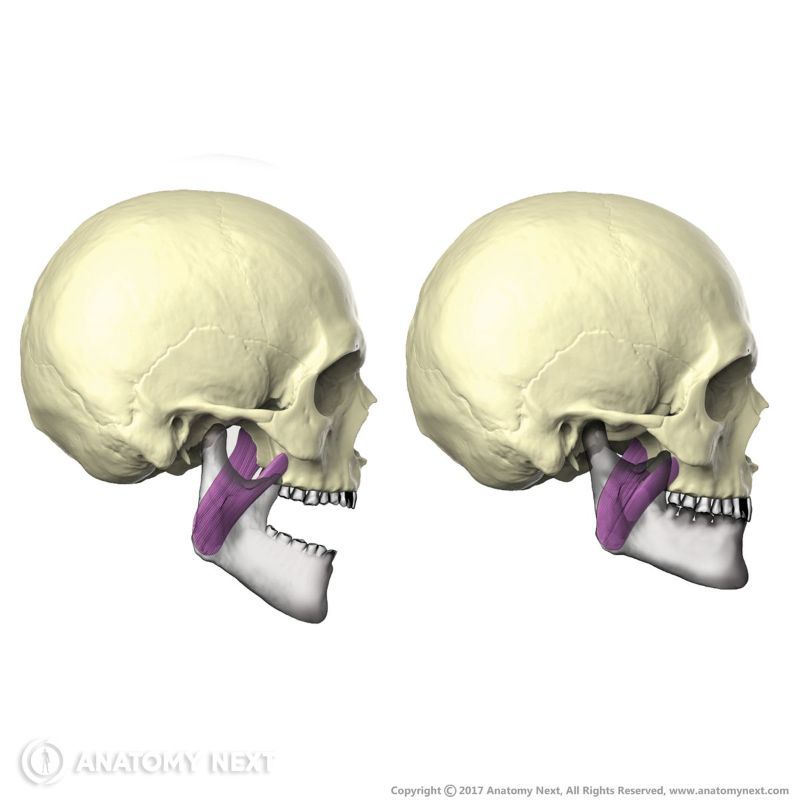- Anatomical terminology
- Skeletal system
- Joints
- Muscles
- Head muscles
- Neck muscles
- Muscles of upper limb
- Thoracic muscles
- Muscles of back
- Muscles of lower limb
- Heart
- Blood vessels
- Lymphatic system
- Nervous system
- Respiratory system
- Digestive system
- Urinary system
- Female reproductive system
- Male reproductive system
- Endocrine glands
- Eye
- Ear
Medial pterygoid
The medial pterygoid (Latin: musculus pterygoideus medialis) is a thick and quadrilateral-shaped muscle located in the infratemporal fossa of the skull. It is classified as one of the primary muscles of mastication. The medial pterygoid is composed of two heads - superficial head (smaller) and deep head (larger). This muscle provides movements of the mandible at the temporomandibular joint (TMJ).


| Medial pterygoid | |
| Origin | Superficial head - maxillary tuberosity of maxilla, pyramidal process of palatine bone Deep head - medial surface of lateral pterygoid plate (sphenoid bone) |
| Insertion | Pterygoid tuberosity of mandible, medial surface of mandibular ramus |
| Action | Bilateral contractions - push mandible forward, elevate mandible Unilateral contraction - pushes mandible to opposite side |
| Innervation | Medial pterygoid nerve of mandibular nerve |
| Blood supply | Pterygoid branches of maxillary, buccal and facial arteries |


Origin
The superficial head of the medial pterygoid muscle originates from the maxillary tuberosity of the maxilla and pyramidal process of the palatine bone. The deep head of the muscle originates from the medial surface of the lateral pterygoid plate (of the sphenoid bone).
Insertion
The medial pterygoid inserts on the pterygoid tuberosity of the mandible and medial (inner) surface of the mandibular ramus.

Action
Upon bilateral contractions, the medial pterygoid muscles push the mandible forward (protrude the mandible). By contracting on one side, the medial pterygoid pushes the mandible to the opposite side. This muscle also contributes to the elevation of the mandible, acting as a synergist to the temporalis and masseter.

Innervation
The medial pterygoid muscle is innervated by the medial pterygoid nerve, a branch of the mandibular division of the trigeminal nerve (CN V3).
Blood supply
The medial pterygoid is provided with the arterial blood supply by the pterygoid branches arising from the maxillary, buccal (branch of the maxillary artery) and facial arteries.